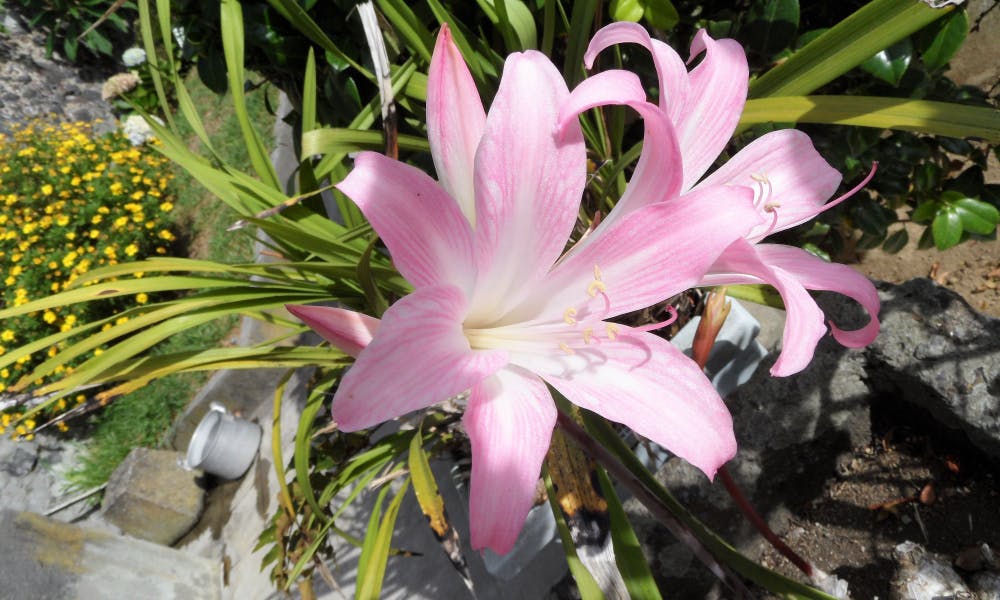MENU
Belladona Flower

Nature is amazing, complex, paradoxical, and yet, full of wonders and secrets that never cease to provoke admiration in the minds of humans. Among the beauty, there are flowers, a pure form of visual and olfactory pleasures. You can use them to express whatever your heart may have as feelings, and to embellish your beautiful garden.
The flower we are going to talk about is “Belladona” or “Beautiful woman” in Italian. Its name comes from the Renaissance where this deadly poison was used to enhance the beauty of women. The elegant women applied a few drops of a belladonna-based infusion into their eyes, to give them deep black eyes by dilating their pupils, called “doe eyes.” This had the power to arouse the lust of the male gender for them with the dilatation of the pupil, as it is one of the manifestations of sexual desire.
In this article, the following points are going to be discussed:
- What are the amazing uses of Belladona flowers?
- What are the dangers of Belladona Flowers?
- What are the characteristics of Belladona flowers?
- How to plant Belladona flowers?
What are the Amazing Uses of Belladona Flowers?
Very rare in Greece, the ancients almost totally ignored Belladona. Nowadays, it is widely used in medicine. Belladona has an effect on the nervous system, the heart, circulation, respiration, temperature, and the eyes.
Belladonna was considered a powerful sedative by the Medieval and Renaissance eras and was seen as a good remedy for painful spasms. It was also widely used in medicine at the beginning of the century in various forms, both in constipation and in the treatment of nervous disorders. It could also relieve pain through external applications. The leaves can be used as an antispasmodic against renal colic and in the treatment of Parkinson’s disease.
Even if those effects are very interesting, you should know that it is also a very powerful poison: In 1813 an entire regiment of over 150 soldiers perished entirely after consuming Belladonna berries. The intoxication has the following signs: a period of excitement accompanied by hallucinations, followed by a comma. Symptoms can last for several days.
What are the Dangers of Belladona Flowers?
The effects of belladonna may differ depending on the species and the dose ingested.
Fruits or berries are most often responsible for poisoning, especially with children because the taste of belladonna fruit is sweet. They can easily be mistaken for blueberries.
The effects are extremely violent: 10 to 15 berries can kill an adult, and two to three can cause severe poisoning for children. The intoxication symptoms are immediate digestive disorders, such as nausea and vomiting. Neuro-vegetative disorders quickly follow with tachycardia, dehydration, breathing discomfort, and mydriasis. At the same time, neurological disorders appear such as anxiety, dizziness, extreme happiness or furious delirium, strange and terrifying hallucinations, and seizures.
In addition, the patient can suffer from hyperthermia, redness of the neck and face, constipation, and urinary retention. The intoxication evolves towards a coma with a loss of reflexes. Death can occur from cardio-respiratory paralysis.
What are the Characteristics of Belladona Flowers?
Belladona, the devil grass, or Atropa belladona is from the Solanaceae family. It is a large perennial plant up to 2 m long, with purplish flowers and blackberries the size of a small cherry. It is infrequent and, in general, grows in glades, in thickets, and at the edge of forest roads. You can find this flower in Europe, southwest Asia, and Africa. Belladona is very toxic, and the juicy and sweet berries have been responsible for many poisonings.
The upper leaves, with an oval shape, are grouped in pairs of one large and one small. They can give off an unpleasant scent when crumpled. The flowers, purplish-brown in color, emerge at the base of the leaves, singly or in pairs, between May and August. The extremely toxic fruit is a shiny blackberry the size of a cherry. Insects and birds help with the pollination of belladona.
How to Plant Belladona Flowers?
Its bell-shaped flower has a greenish color with wine-colored leaves, and its shiny black fruit, the size of a small cherry, makes this plant very unique. To make it grow, you can put it in a limestone to neutral soil, at least half a day in the shade. This way, it can manage on its own.
There is also a variety with yellow flowers called Atropa belladonna and is quite rare. Set up your belladonna in a corner of the uncrowded garden where you can admire it in peace. You do not need good maintenance for this plant. Belladonna is very resistant to winter cold and there is no need to prune or cover it when winter approaches.
To prevent it from dispersing too much in your garden, remove the berries as soon as they appear. Please make sure to get rid of them so that no one can accidentally ingest them.
Flowers are an amazing gift from Nature. They exist in a very wide range of meanings, colors, and scents. They are the best tool to bring bright colors and beauty into your life and your environment, reduce your stress level, and bring happiness into your house.
Belladona can be a very scary plant thanks to its poison, but there are many reasons to have it in your garden, especially if you know how to use it well.
Moreover, this flower has so many stories, especially about dark magic and alchemy, so you can tell your visitors about it to create an amazing atmosphere of supernatural and witchcraft. What an amazing thing to add to make your Friday night or your Halloween party more fun!
However, always be aware that this plant may kill, so put it in a space that your children cannot reach and make sure to use it very wisely!

